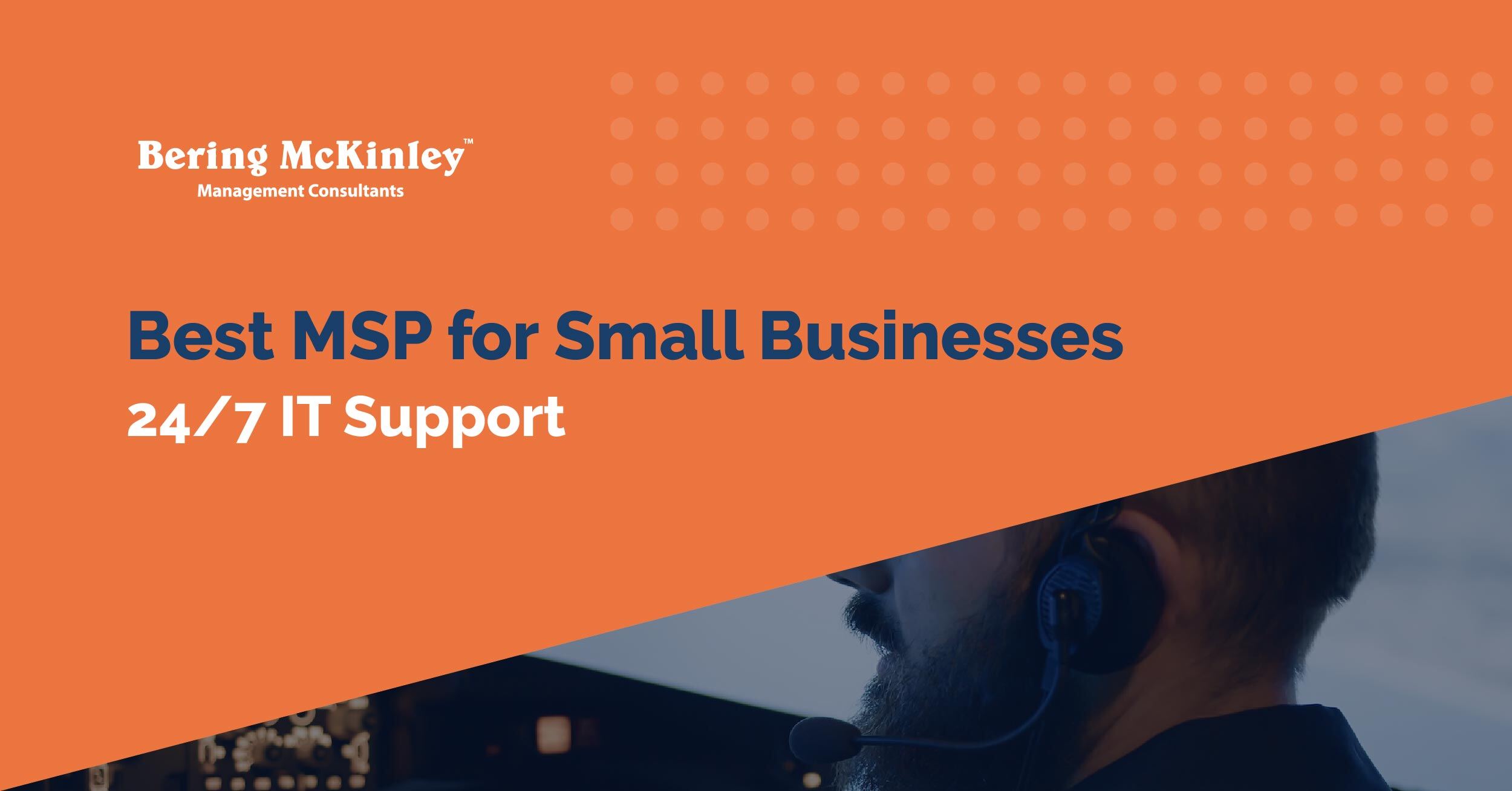Why Small Businesses Should Care About 24/7 MSP Support for Improved Productivity and Uptime
Running a small business is no small feat. Between managing operations, serving customers, and staying competitive, you wear multiple hats every day....
5 min read
 Josh Peterson
:
Jul 30, 2025 11:00:00 AM
Josh Peterson
:
Jul 30, 2025 11:00:00 AM
.jpg)
You’ve lost count of the cybersecurity webinars you’ve endured, and you could run a network diagnostic with your eyes closed. But if you’re ready to grow your Managed Service Provider (MSP) and chase some capital, there’s just one truth you can’t escape. Investors see a lot of MSP business plans. If yours doesn’t shout credibility, clarity, and a formula for real growth, it’ll end up in someone’s “maybe later” pile.
Wondering what turns a stack of financials and technical jargon into a pitch that makes sophisticated investors pay attention? Grab your caffeinated beverage of choice (recommended for all MSP ventures), because you’re about to find out exactly what investors want to see—in plain English, with a few friendly jabs at the “I know what I’m doing” crowd along the way.
A business plan is more than a necessary hoop to jump through before asking for funding. Think of it as your organization’s GPS—from start-up to scale-up to acquisition target. It’s how you prove to yourself (and to the people with the checkbooks) that your idea isn’t just technical wizardry, but an enduring, profitable enterprise with real market fit. For more on enduring, profitable enterprise, read our blog on Recurring Revenue Models for MSPs: A Blueprint for Long-Term Success.
Besides, investor due diligence is nothing if not thorough. The more buttoned-up your plan, the less likely you are to trip on awkward questions like, “What’s your client churn rate?” or “Why are you targeting every vertical that exists?” Investors finance clarity, not chaos.
Investor meetings are not the place for hand-waving optimism (“Trust me, we’ve got this!”). They want to see detailed thinking around several key areas:
Successful MSP business plans start with a sharp sense of “who we serve best.” This shows up as an Ideal Customer Profile (ICP)—the set of business characteristics that make a prospect the perfect match for your services. Investors perk up when you can rattle off the compliance headaches, data privacy concerns, or wonky legacy systems unique to your ICP.
Example: Netherlands-based Vancis found growth by targeting educational institutions with specific cloud backup solutions. They didn’t go after “everyone.” They went after the right one.
If your plan highlights the same generic service list as everyone else in the industry (“remote monitoring and management, cybersecurity, backups”), investors’ eyes glaze over. Stand out by explaining your unique approach, innovative partnerships, support model, or automation stack. Maybe you have contracts with hard-to-reach verticals (think government agencies), or you’ve built proprietary efficiencies that no one else has.
Your offerings should address real customer pain points with clarity. Instead of pitching thirty-four different “service bundles,” focus on what solves problems for clients and has potential for scaling. Investors look for service plans that are easy to understand, price, and deliver.
Recurring revenue is the lifeblood of any successful MSP. Investors will want to see a clear outline of how you structure contracts for monthly recurring revenue (MRR), how you balance add-ons, and any innovative billing models you’re using (flat-rate vs. tiered vs. per-device). Predictability in revenue makes investors breathe easier (which, trust us, is a rare occurrence).
A deep market analysis is music to investor ears. Show them you’ve researched local, regional, or vertical industry competition. What’s the total addressable market (TAM)? Who else is chasing your prospects? Have you identified a gap, or do you just hope for the best?
Spell out your go-to-market plan, don’t just hope for “organic growth.” Investors respond well to details about sales strategies (inside sales vs. channel partnerships), your marketing mix (SEO, content, trade shows), and your onboarding process.
With automation, AI, and RMM tools, MSPs collect a treasure trove of data. Are you using it to improve service, reduce churn, or fuel targeted upsells? Investors love plans that show you’re not stuck in 2012.
It’s the classic investor question for a reason. Investors want to see an experienced, committed leadership team with both technical expertise and business acumen. They’ll sniff out a founder who only likes tinkering with SonicWalls, but has never managed a P&L or negotiated a big client contract.
This is where details matter. How do you use PSA (Professional Services Automation) tools? Where have you standardized, and where are you still “winging it”? Investors want you to paint a picture of an MSP operation that runs like a well-oiled, customer-obsessed machine. If you can quote efficiencies gained from tools like ConnectWise PSA and RMM, or show reduced customer response times, now’s the time.
Investors loathe technical debt. How have you planned for cloud transitions, compliance changes, or evolving security threats? If your plan doesn’t address change (whether it’s in tech or regulation), it’s not worth much.
All the vision in the world won’t move the investment needle if you can’t show credible financials. This isn’t about wild guesses; it’s about reasoned, data-backed projections.
MSPs live in a strange accounting land. Recurring revenue is great, but onboarding costs and investment in automation can eat up capital quickly. Outline how you’ll balance these to maintain positive cash flow—even if a few big contracts walk away.
The compliance alphabet soup (GDPR, HIPAA, SOC 2…) keeps investors up at night. Detail your compliance plan, not just as a necessary evil, but as a selling point. Savvy MSPs use robust compliance as a differentiator, especially when hunting for clients in heavily regulated sectors.
Show your processes for client retention, incident response, and backup continuity. High customer churn is the death knell for MSPs (don’t try to hide it; address it head-on). Investors want a plan that anticipates outages, data loss, and pesky ransomware events.
A little humor can help soften the reality check, but skip these “gotchas” at your own peril.
Investors are a discerning bunch. They want to see focus, discipline, and serious business chops. But they’re also looking for a spark—that extra something that tells them your MSP won’t just survive, but thrive.
Whether your plan is a PowerPoint masterpiece or a 40-page tome, remember:
And if you feel a little overwhelmed by the shifting landscape of managed services and the evolving demands of investors, don’t worry. That’s not a flaw in your entrepreneurial coding; it’s a sign you understand just how dynamic this business is.
To get your MSP business plan investor-ready, many turn to seasoned guides like Bering McKinley. With decades of experience in MSP success, Bering McKinley helps MSP owners build plans, streamline operations, and win over even the toughest investors. Don’t just hope for funding. Engineer it. Book a consultation with Bering McKinley and find out what your MSP business plan might be missing.

Running a small business is no small feat. Between managing operations, serving customers, and staying competitive, you wear multiple hats every day....

Managed Service Providers (MSPs) are always looking for new ways to improve efficiency, reduce costs, and provide excellent service to clients. With...

Cybersecurity is no longer optional for Managed Service Providers (MSPs)—it’s required for compliance. MSPs are tasked with the critical...